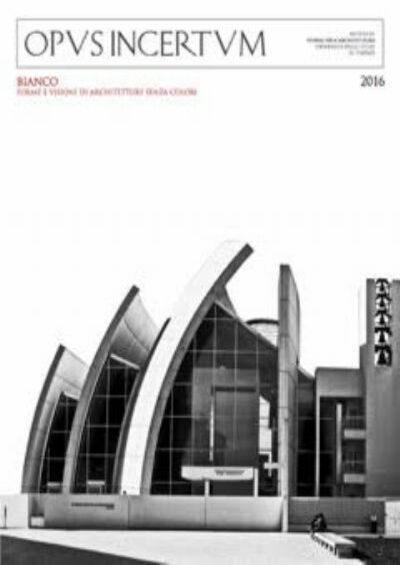The annual journal “Opus Incertum” dedicates two consecutive issues, in 2023 and 2024, to the themes of museography, set-up and display, in their relationship with architecture, art, design and theoretical thought. The first issue: Towards a new idea of a museum: architecture, arts, theory and history 1934-1964, edited by Emanuela Ferretti and Orietta Lanzarini, in preparation for 2023, intends to take stock of the most significant previous experiences, from the 1930s to sixties. The second: The display from the 1950s to today. The multiscale of the project, between architecture and design, edited by Orietta Lanzarini and Davide Turrini, whose publication is expected in 2024 (call for paper issue: March 2023), aims to extend the investigations also to recent years, with particular attention to the new ways of exhibiting works, objects, stories and concepts in museums and exhibitions to an increasingly differentiated public.
Call for papers 2023 | Towards a new idea of a museum: architecture, arts, theory and history 1934-1964
As recent studies have shown – most recently those collected in the volume: E. Dellapiana, M. B. Failla, F. Varallo (eds.), Museographie. Musei in Europa negli anni tra le due guerre. La conferenza di Madrid del 1934. Un dibattito internazionale, (conference proceedings, Milan 2020) -, the year 1934 marks a milestone in the history of museography: sixty-nine experts from nineteen different nationalities come together in Madrid to establish the criteria, already being defined since the beginning of the Twentieth Century, on which to build a new idea of museum. In the same year, in a well-known article in Casabella, Elizabeth Moses, the official of the Kunstgewerbemuseum in Cologne, who was passing through Italy before going to the United States summed up these criteria: the “living museums”, as Henri Focillon had defined them in 1921, had to acquire a wide-ranging educational and social meaning, thanks to the systematization of the heritage of the past and to its combination with a museum context that expressed the taste and innovative thrust of the present. Therefore, works of art were not only supposed to be studied and preserved in the museums, but offered to visitors, of any cultural level, as living evidence of their history, to be acknowledged and integrated into their daily life. The museum display becomes the key to this dialogue, an educational instrument intended to mediate between the public and the exhibited object.
In Italy the museographic reform has its most fertile season in the period between 1945 and the mid-1960s. The protagonists of the reorganization of Italian museums, but also of international ones, are above all the architects, who are entrusted with the connection, not always simple, between pre-existing architecture (or a new building) and the museum organism, but also the design of the devices for displaying the objects and finally, the construction of exhibition itineraries capable of attracting the public. Although attentive to the new methods of museographic approach, this design experience also implies reflection on the nineteenth century and early twentieth-century museum tradition, from setting museums (musei d’ambientazione) to historic house-museums. With the enactment of the Carta di Venezia, in 1964 – which on the one hand establishes a series of fundamental regulations for the safeguarding of monuments, on the other it determines significant constraints, especially in the case of buildings of historical and artistic value that house museum institutions – other issues appear on the horizon of museographic research, on which it is worth trying to reflect.
On these premises, proposals for contributions from scholars of different disciplines are accepted, at any stage of their career; the participation of young scholars is particularly welcomed. The themes can be both of a general type and of individual case studies, as long as the discussion allows to exemplify the themes specified below or other similar ones.
The following indications constitute an outline, although not exclusive or binding, of the possible topics, which may concern any context, national or international:
- The role of setting museums (musei d’ambientazione) and historic house-museums in the evolution of the museum’s design in the twentieth century
- Ephemeral spaces, permanent spaces: the influence of exhibitions on the museographic design
- The architectural project of the museum: between restoration, extensions and new constructions
- The “authorial” museum: the architect’s mark on the museum design
- The display of the collections in the museum’s design: taxonomic, chronological, and narrative itineraries
- The relationship between officials, conservators, art historians and architects
- The Museum, the museums: art galleries; technical-scientific museums; architecture museums; university museums, etc.
- The devices of presentation of the works in relation to the architectural space: light, shapes, materials, colors, etc.
- The architecture of the museum beyond the exhibition function: libraries, research centers, restoration laboratories, ect.
- The theoretical debate on museum architecture: journals, books, conferences, etc.
Essays – in Italian, English, French, Spanish or German – must not exceed 40,000 characters, including notes, with a set of 10 images (free of fees). There will also be short papers of 15,000 characters maximum, including notes, with 3-4 images (free of fees).
Proposals should be sent to: emanuela.ferretti@unifi.it and orietta.lanzarini@uniud.it
Deadlines:
15 June 2022: deadline for submission of abstract (max 2000 characters) and a short CV (max 1000 characters)
1 July 2022: notification of acceptance of pre-selected contributions
30 October 2022: deadline for submission of your paper (full papers: max 40,000 characters words; short papers: max 15,000 characters words)
Please click here for Guidelines: Instructions for Authors

